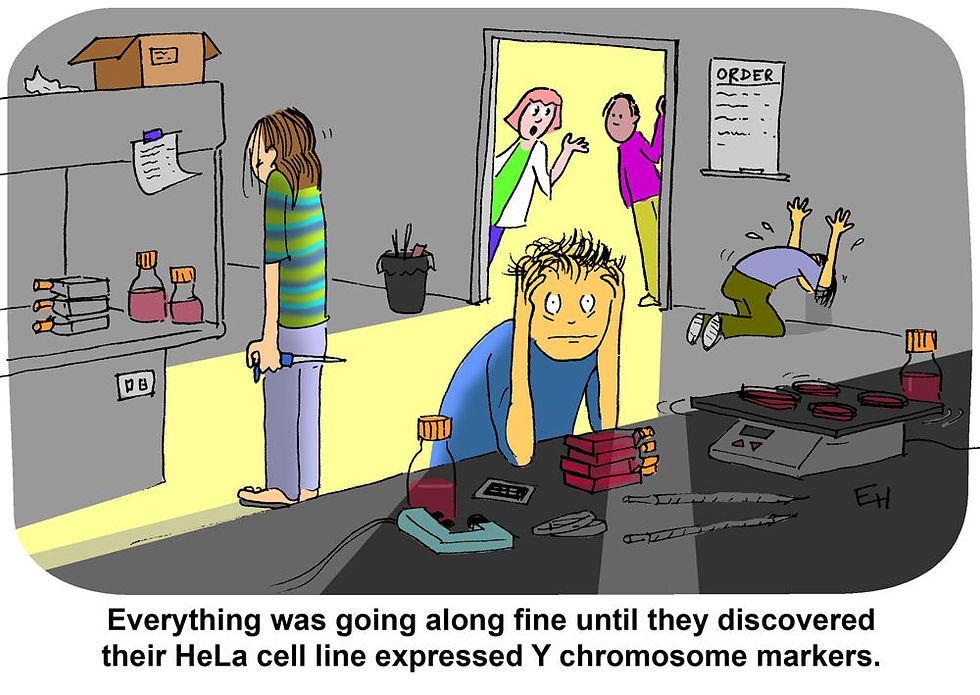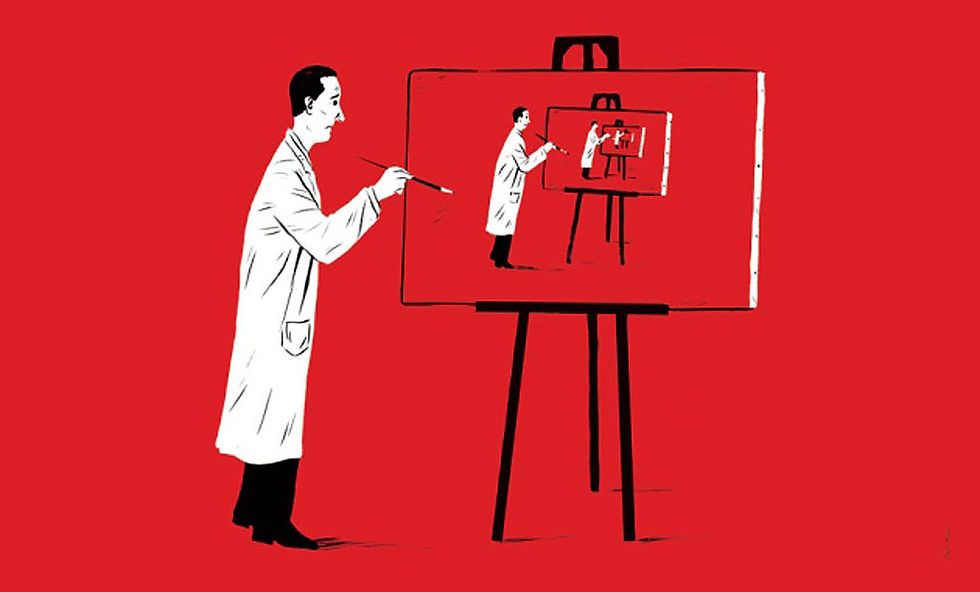What We Think We Know in Medical Science May Be Based on Faulty Information
- Joan Rothchild Hardin

- Apr 1, 2018
- 7 min read
Updated: Apr 7, 2021

I received an inadvertent education on how published research study results can be misleading while working as a lowly research assistant at some well respected academic institutions decades ago and have ever since kept this knowledge in mind when reading about modern medical knowledge: the ‘givens’ on which conscientious doctors base their treatments.
I covered some of the serious issues regarding modern medical research in an earlier post, Big Pharma, Corruption, Medical Research & Your Health:
The US FDA often allows big pharma to pay scientists for ghostwritten research papers. The published papers may be written by employees of the pharmaceutical company while the big-name scientist whose name is on the paper had no hand in the research.
Big pharma uses various ways to influence what gets published in major medical journals, including funneling millions of dollars annually to major American medical journals.
Pharma companies spend 19 times more money on marketing their drugs than on researching and developing them. Their profits go up. Their costs go down.
Big pharma puts profits over drug effectiveness and safety. Aggressive advertising promotes misleading effectiveness and safety information. The drug industry spends billions a year on TV ads, disinclining negative news stories about pharmaceuticals.
Two editors of well-respected, peer-reviewed medical journals publicly state they no longer have faith in the veracity and usefulness of published clinical research results:
“It is simply no longer possible to believe much of the clinical research that is published or to rely on the judgment of trusted physicians or authoritative medical guidelines. I take no pleasure in this conclusion, which I reached slowly and reluctantly over my two decades as an editor of the New England Journal of Medicine.” – – – Dr Marcia Angell, physician and longtime Editor-in-Chief of the New England Medical Journal (Marcovitch, 2010)
“The case against science is straightforward: much of the scientific literature, perhaps half, may simply be untrue. Afflicted by studies with small sample sizes, tiny effects, invalid exploratory analyses, and flagrant conflicts of interest, together with an obsession for pursuing fashionable trends of dubious importance, science has taken a turn towards darkness.” – Dr Richard Horton, the current Editor-in-Chief of the Lancet (Walia, 2015) – (Hardin, 2015)

Then I read a recent article called Evidence-Based Lies: The facade of veracity in medical science hinges on widespread ignorance and was prompted to write on the topic again because it’s so important to our health, the health of people we love, and the health of our planet.
CELL MISIDENTIFICATION
Gossard’s intelligent article centers on whether the cells used in much of basic biomedical research are actually what the researchers believe them to be. If they’re not, then any findings based on studies using these cells will be misleading.
And it turns out cells used in basic biomedical research are often misidentified. They are not what the scientists believe them to be.
Here’s how Gossard describes the magnitude of the problem:
“The International Cell Line Authentication Committee maintains a database of misidentified cells used in biomedical research. Scientists who study basic cell functions or try to discover new drugs do much of their research on cells they obtain from mail-order bio-supply companies or from stocks deep in their lab’s freezer. The assumption underlying all of their work is that the cells on which they conduct their experiments are proper models for the phenomena they’re examining.
“That’s a great theory, but many scientists have no idea how far from reality that theory deviates. And those who do often prefer to turn a blind eye because the problem is so profound it has the potential to obliterate decades of their life’s work.
“It turns out that a staggering portion of cells used for basic science research is misidentified. In other words, scientists who think they’re studying healthy liver cells or breast cancer cells are often actually working with cervical cancer cells. In many cases, even the species is wrong — researchers who think they’re working on human cells might actually be analyzing rat cells. The problem is worldwide, and the numbers are startling. A recent paper published by the Federation of American Societies for Experimental Biology showed that 85% of cell lines established in China are misidentified.”
– (Gossard, 2018)

Gossard also cites another recent article, published in PLoS One, that demonstrates how widespread the problem of cell misidentification is in the scientific literature and the futility of any efforts to avoid the problem.
From the PLoS One article:
“While problems with cell line misidentification have been known for decades, an unknown number of published papers remains in circulation reporting on the wrong cells without warning or correction. … We found 32,755 articles reporting on research with misidentified cells, in turn, cited by an estimated half a million other papers. The contamination of the literature is not decreasing over time and is anything but restricted to countries in the periphery of global science. The decades-old and often contentious attempts to stop misidentification of cell lines have proven to be insufficient.” (Horbach & Halffman, 2017)
THE STORY OF HENRIETTA LACKS & HER IMMORTAL CELLS

Henrietta Lacks was a woman who died from aggressive adenocarcinoma of the cervix on October 4, 1951. While she was still alive, on February 8, 1951, a cervical tissue biopsy was taken. These cells were placed in a culture, the first human cells ever to be grown this way. And they’ve been growing ever since.
Her cells became highly important in medical science. They were used to develop the Salk polio vaccine in the 1950’s. In 1960 and 1961 they were sent on rockets in the first unmanned and manned space missions to find out what happens to cells in zero gravity. They’ve also been used around the world ever since in many scientific landmark studies on cloning, gene mapping, and in vitro fertilization.
Although Henrietta Lacks is long gone, her cells, code named HeLa cells, have become immortal. They turned out to be highly robust and have been contaminating cell cultures believed to be from other tissue types, such as breast and prostate cells, for over half a century. Somehow, HeLa cells are able to float in the air on dust particles and travel on unwashed hands to contaminate other cultures. (Zielinski, 2010)
Twenty years after Henrietta Lacks’ death, mounting evidence suggested that HeLa cells had contaminated and overgrown other cell lines. Cultures, thought to be of tissues such as human prostate cancer, human breast cancer, or mouse, were discovered in fact to be HeLa cells. This is a serious problem. The debate over cell culture contamination started in the 1970s and has yet to be resolved. (Lucey, Nelson-Rees & Hutchins, 2009) Telophase stage of human (HeLa) cells dividing



Marker Text:
Henrietta Lacks (1920-1951) Born in Roanoke on 1 Aug. 1920, Henrietta Pleasant lived here with relatives after her mother’s 1924 death. She married David Lacks in 1941 and, like many other African Americans, moved to Baltimore, MD. for wartime employment. She died of cervical cancer on 4 Oct. 1951. Cell tissue was removed without permission (as usual then) for medical research. Her cells multiplied and survived at an extraordinarily high rate, and are renowned worldwide as the “HeLa line,” the “gold standard” of cell lines. Jonas Salk developed his polio vaccine with them. Henrietta Lacks, who in death saved countless lives, is buried nearby.
Gossard sums up the implications of the cell misidentification problem like this:
“Improper cell line identification not only undermines the research that relied directly on the misidentified cells, but also hobbles hypotheses formed by other researchers on the basis of published papers that used mislabeled cells. The result is a staggering waste of money and time that further delays the culmination of scientific progress.
“Improper cell identification pervades the scientific literature dating back decades. The layers of subsequent citation of erroneous papers obscure the origins of what are likely astronomical numbers of wrong assumptions in biological science today. It is quite probable that many scientists have wasted entire careers drawing mistaken conclusions due to cell-line misidentification. The amount of taxpayer money that goes to fund research that isn’t even done on the right kind of cells likely represents one of the biggest wastes of consumers’ money in all of biomedicine.”

REPRODUCIBILITY OF STUDY RESULTS
Advancement in science is based on this fundamental rule: Research findings must be replicated by other researchers using the exact methods used by the original investigators. “Replication is key to ensuring that conclusions aren’t spurious. Nevertheless, science is currently plagued by hordes of irreproducible study results.” (Gossard, 2018)

1,576 scientific researchers took part in a survey on reproducibility in research conducted by the journal Nature. Over 70% of them reported having tried and failed to reproduce another scientist’s experiments – and more than half had also failed to reproduce their own experimental findings. (Baker, 2016)

For additional distressing information about what is and isn’t true in accepted medical research findings, see my earlier article Big Pharma, Corruption, Medical Research & Your Health. (Hardin, 2015)

REFERENCES
Baker, M. (2016). 1,500 scientists lift the lid on reproducibility: Survey sheds light on the ‘crisis’ rocking research. Nature. See: https://www.nature.com/news/1-500-scientists-lift-the-lid-on-reproducibility-1.19970
Gossard, B. (3/9/2018). Evidence-Based Lies: The facade of veracity in medical science hinges on widespread ignorance. Medium.com. See: https://medium.com/@BlakeGossard/evidence-based-lies-1ec8db16cc8a
Horbach, S.P.J.M. & Halffman, W. (2017). The ghosts of HeLa: How cell line misidentification contaminates the scientific literature. PLoS One. See http://journals.plos.org/plosone/article?id=10.1371/journal.pone.0186281
Hardin, J.R. (2015). Big Pharma, Corruption, Medical Research & Your Health. See: http://allergiesandyourgut.com/2015/08/08/big-pharma-corruption-medical-research-your-health/
Lucey, B.P., Nelson-Rees, W.A. & Hutchins, G.M. (2009). Henrietta Lacks, HeLa cells, and cell culture contamination. Archives of Pathology & Laboratory Medicine, 133:9, 1463-7. See: https://www.ncbi.nlm.nih.gov/pubmed/19722756
Marcovitch, H. (2010). Editors, Publishers, Impact Factors, and Reprint Income. PLoS – Medicine. See: http://www.ncbi.nlm.nih.gov/pmc/articles/PMC2964337/
Walia, A. (2015). Editor In Chief Of World’s Best Known Medical Journal: Half Of All The Literature Is False. See: http://www.collective-evolution.com/2015/05/16/editor-in-chief-of-worlds-best-known-medical-journal-half-of-all-the-literature-is-false/
Zielinski, S. (2010). Henrietta Lacks’ ‘Immortal’ Cells: Journalist Rebecca Skloot’s new book investigates how a poor black tobacco farmer had a groundbreaking impact on modern medicine. Smithsonian.com. See: https://www.smithsonianmag.com/science-nature/henrietta-lacks-immortal-cells-6421299/#cDBR30fRyRyZrxvu.99 © Copyright 2018. Joan Rothchild Hardin. All Rights Reserved
DISCLAIMER: Nothing on this site or blog is intended to provide medical advice, diagnosis or treatment.


Comments